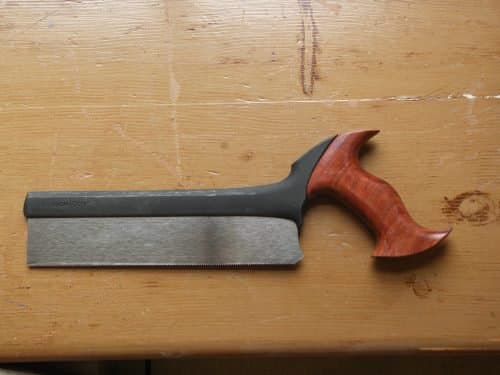Veritas woodworking tools
Well, in answer to questions about which saws to buy, which planes I recommend and a few other such questions, I will try to answer them here.
I have used old and modern hand tools for almost five decades. Some that I still use I bought as an apprentice somewhere around 1965 from Mr Cheapy who came from Sheffield once a weak to sell seconds he bought from the factories of that famed industrial hub of the steel world. Mr Cheapy came in a minivan laden with treasures. I bought Marples marking, cutting and mortise gauges made from beech from him and I still use them now. My first Stanley plane cost me a weeks wage of £3.10s ($4.50c) and my Spear & Jackson 12″ tenon saw about the same. Today a good plane from better alloys and higher tolerances will cost half the relative costs, which brings me to my point. I use a wide range of planes and chisels, saws, spokeshaves and so on. Many would have me give a definitive answer in the hopes that a one-size-fits-all might work, but that would really be too simple.
I think that suggested or recommended starter tools might be helpful and I think that there is some truth to that. Problem here is that if I recommend the best make it might well be the most expensive and the cost prove prohibitive for several good reasons. On the other hand a secondhand tool in poor, unsharpened condition and badly set might prove financially agreeable, but beyond the questioner’s ability to reconcile functional discrepancies because of inexperience and lack of mechanical knowledge.
The range of tools Veritas produces is quite expansive for a relatively new maker with no prior history as a woodworking tool manufacturer. They are however highly experienced in tooling and engineering which reflects in the manufacture of their products. Few modern-day makers can match the quantity or the quality and certainly nothing coming from the establishes stables of Sheffield makers comes close to matching Veritas standards. Now of course Clifton planes of Sheffield match the quality in the plane range, but that’s a fairly limited range compared to Veritas.
Someone asked me today about the Veritas dovetail saw they see me use from time to time in an article I wrote. They perhaps see this as an endorsement and want to buy what I am using. Fact is, I like the tools I use and the ones you see me using in many ways do express my endorsement. On the other hand you must remember that all of the cutting tools I use need maintenance sharpening; these are iterant tasks. That being so, I find one saw as good as any other. Small-toothed saws like the Veritas dovetail saw are easier to start, cut with and control. They are ideal for novice woodworkers, woodworkers of small stature and for experienced woodworkers who want a finer cutting saw for close hand work. An often unnoticed fact is that all saws can be sharpened to match the best of the best, but you must have the skill and knowledge to sharpen to task. Another fact often overlooked is the reality that saws (and other cutting tools) dull through use and must be sharpened on a regular basis if they are to cut efficiently. The point in all of this is that you must learn to sharpen saws and small toothed saws made from thin steel is a difficult and highly sensitive task for even experienced craftsmen like myself and it’s this that makes the whole sphere of tool recommendations difficult.
I would never recommend someone paying over say £70 for a saw but if they absolutely cannot sharpen a saw, that may be necessary for them. Problem here is that some expensive saws are poorly set and sharpened. Which one should I recommend without testing them first. One thing I can say is that all Lie Nielsen, Veritas and Wensloff saws work well. Cost you want to pay is up to you.


